"Sweet-Gold" elderberry apple jelly with lemon honey
- Vegan*, lactose-free, gluten-free
Preparation time: 90 minutes - Difficulty level: medium
- 20-25 ripe cones of elderflowers
- 1 l cloudy apple juice
- 2 tbsp
lemon honey- 500 g gelling sugar 2:1
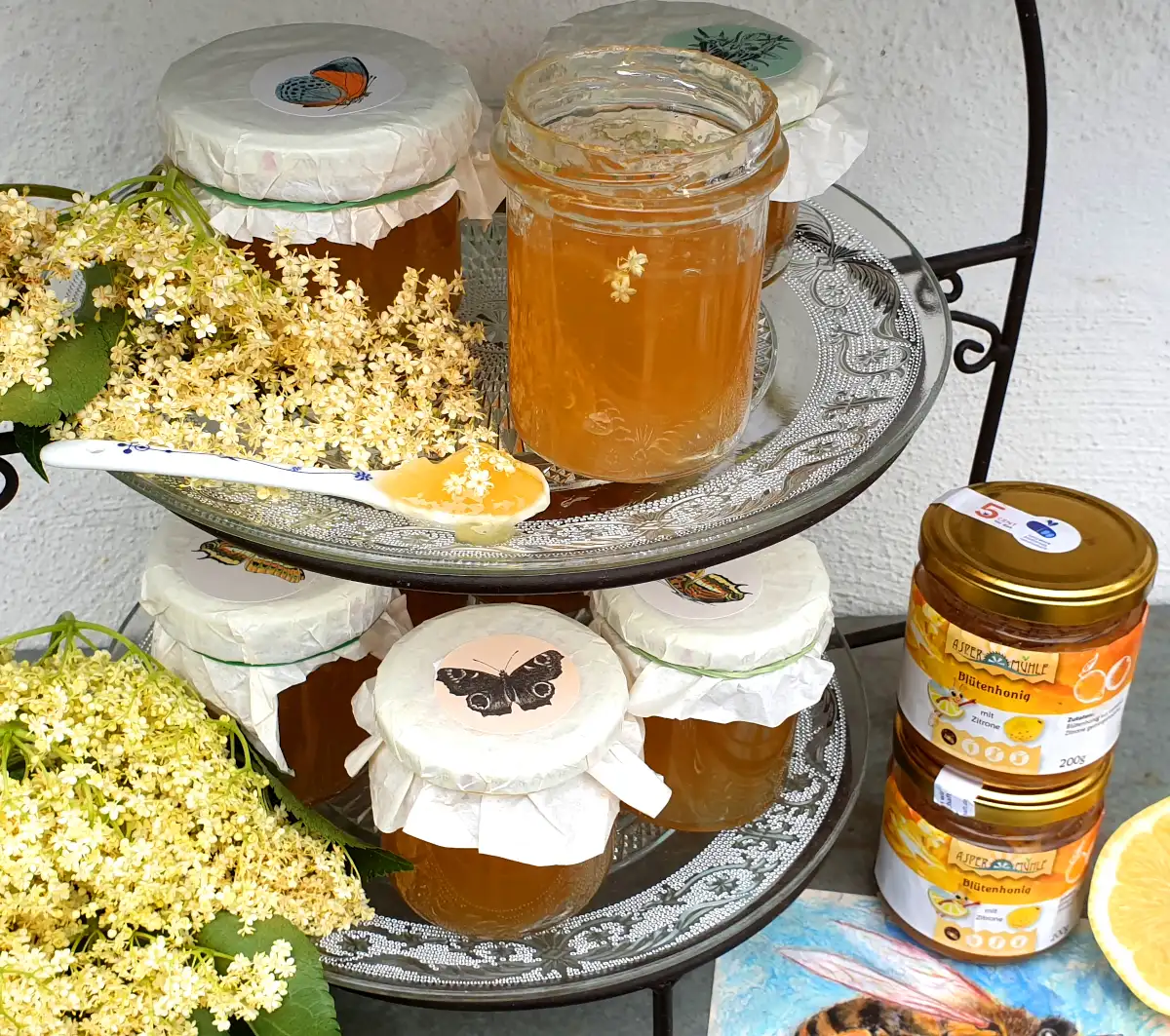
Preparation:
Do not wash the elderflowers, just shake them carefully or place them outside in the shade on a kitchen towel for about ½ hour to get rid of any "inhabitants". The particularly aromatic pollen is lost during washing.Cut the flowers from the thick stems over a pot, pour apple juice over them and leave to infuse for at least 12 hours, covered. The thick stems are considered slightly poisonous when raw, as they contain glycosides, whereas the flowers do not.
The next day, strain the mixture through a kitchen towel or fine hair sieve, mix with preserving sugar (follow the instructions on the packet) and lemon honey and bring to the boil, then simmer for approx. 5 minutes, stirring constantly.
Make sure you do a jelly test to see if the jelly is firm enough for you. To do this, dip a teaspoon into it and spread it on a saucer so that it cools quickly and you can see how firm it is.
Pour the finished jelly into clean jars that have been rinsed with hot water and seal immediately; the lids should also be rinsed with hot water. To ensure the lids are airtight, you can turn the jars upside down for a few minutes. If it "pops", they are good.
If you haven't eaten it before, your elderberry jelly will keep for 1-2 years in the cellar, dark pantry or cupboard.
You can find a short botanical guide to elderberries below:
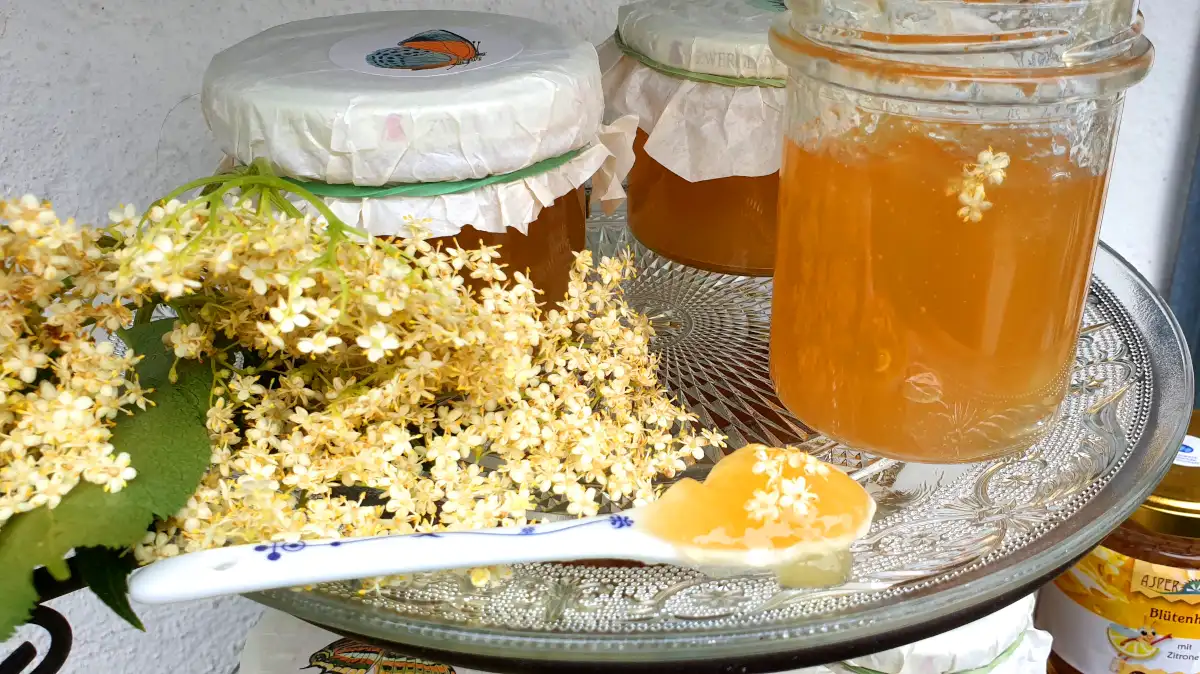

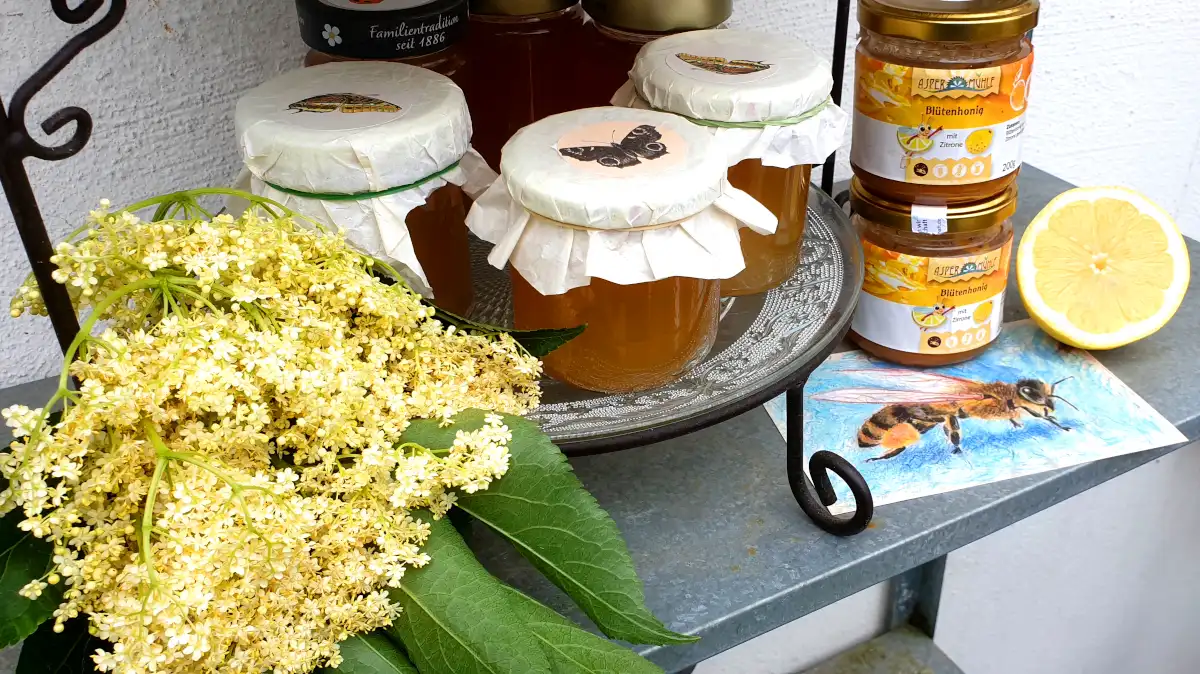
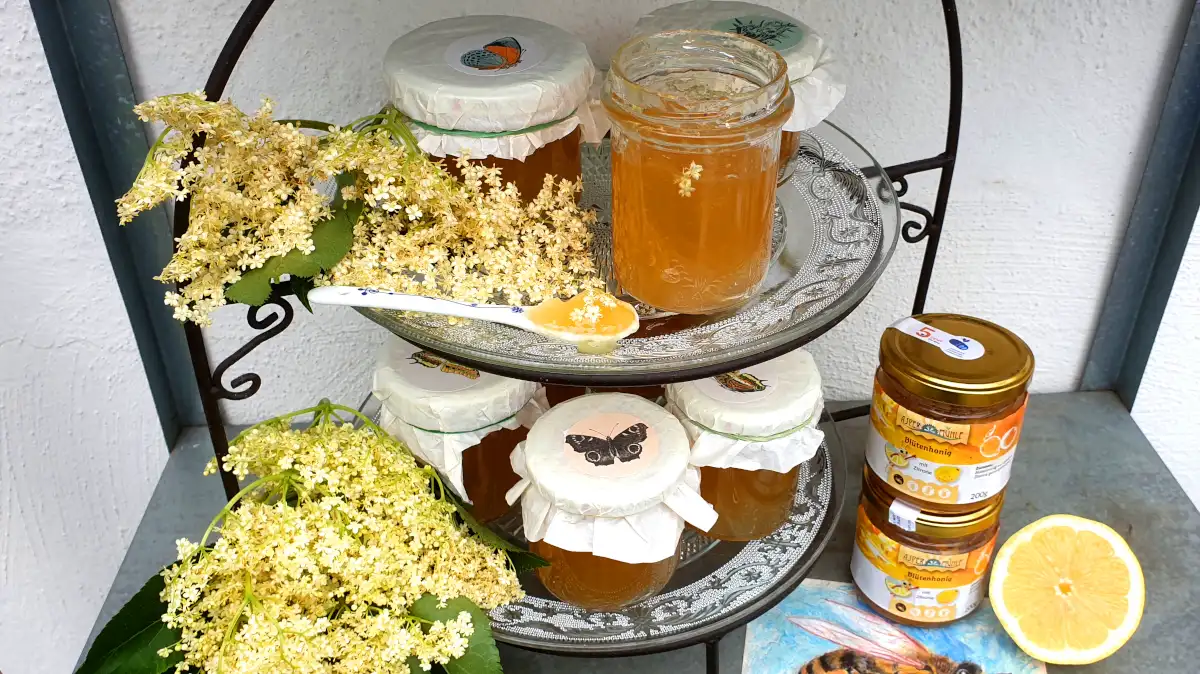
Elderberry - Sambucus nigra
Distribution:
In temperate and subtropical regions throughout the world
Habitat: Forest edges, wild hedges, fallow land, gardens, parks, meadows and forests. Likes to colonize forest fires because it prefers potassium-rich soil with wood ash
Collection times:
Mid to late spring: blinking buds
Early to midsummer: inflorescences
Late summer: green fruits
Late summer to early autumn: ripe, black fruits
There are hardly any other trees or shrubs that are the subject of as many folk legends as the black elder, also known locally as elderberry or elderbush, and many of them are of a cautionary nature. Every farm used to have its own elder tree. For the Nordic forest peoples, the elder is considered a sacred tree, consecrated to the goddess and her figure as Frau Holle. In other regions, they are believed to be gateways to the realm of fairies and trolls and access to the ancestors.
The 'elder mother' is happy to give a few flowers and fruits to those who ask politely. But anyone who breaks or burns branches or destroys a shrub must, according to legend, reckon with a curse.
Whether the shrub is a gateway to the magical world or not, the dark tales have their own meaning. The flowers and fruit taste wonderful and have healing properties, but all other parts of the elderberry are poisonous.
Today, the fragrant flowers are picked in early summer and made into syrup, wine, sparkling wine jelly or dipped in batter and deep-fried. The bears, which ripen in late summer and fall, taste just as delicious and are also a traditional remedy for colds. In the past, elderflowers were used to treat fevers, but today they are mainly used for syrups and desserts. However, the flowers also go well with savory dishes, try them as a filling for trout or in lentil salad or cabbage vegetables. You can also dry them, mix them with sea salt and fennel seeds and use them as a spice.
Sometimes the most beautiful fruits grow at the very top of the bushes, so you are tempted to bend the branches down to harvest them, but they break very easily. If you don't want to risk a curse, handle them with care.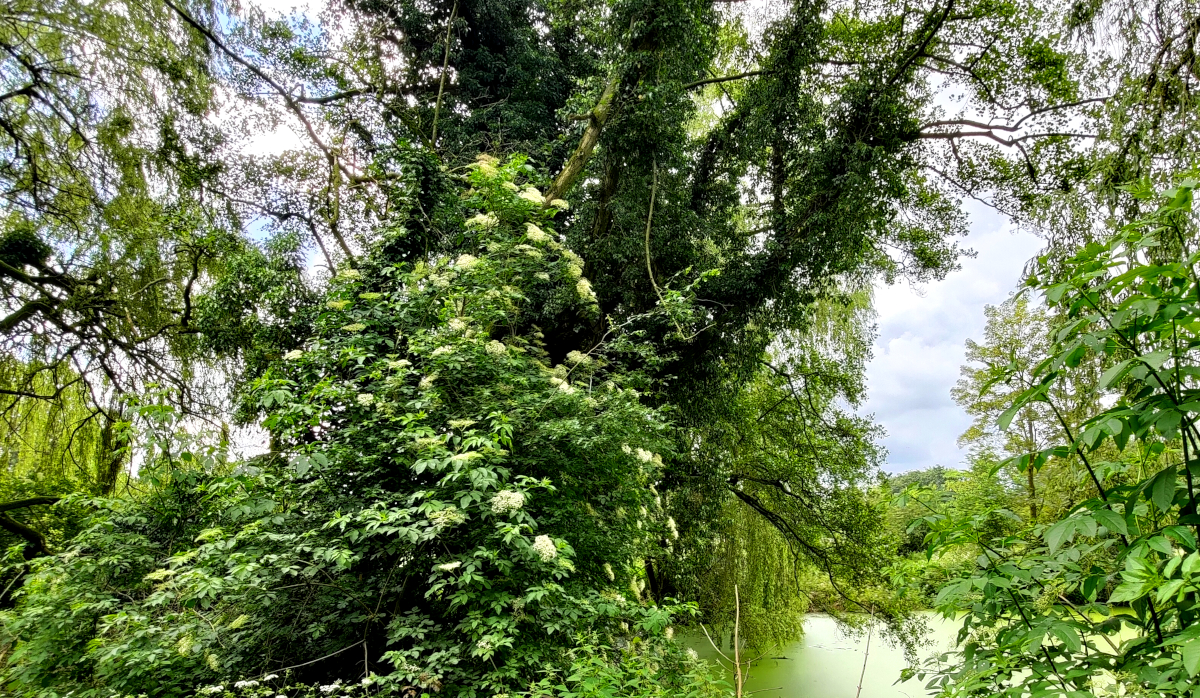
Old elder bush at the Aspermühle
Elder grows as a large shrub or small tree. Older branches have a light gray-brown, deeply furrowed bark. They are hollow and have a cotton wool-like pith. Young shoots are rough and green, the twigs break very easily, so they should only be bent carefully when collecting.
Each leaf is up to 30 cm long and consists of 5 to 7 leaflets with toothed edges, arranged in pairs. The bitter leaves are not edible, but are traditionally used for soothing ointments for bruises and strains.
The tiny green flower buds grow in large umbels on thin stems. They taste like thyme and are good for pickling. In early summer, the creamy white flowers with yellow stamens open into flat umbels 10 to 30 cm in diameter. Collect the flowers when they are freshly opened and still carry the aromatic pollen. The flowers have an antiviral and immune-boosting effect, and are particularly helpful as a tea for feverish colds.
Elderberries are green at first, then reddish and blackish-purple when fully ripe. Their juice is rich in anthocyanin and strongly colored. The seeds are small and hard. They strengthen vitality and vigor.